Glenn Brown: Dessins: Galerie Max Hetzler, Paris
Galerie Max Hetzler is delighted to announce a solo exhibition by Glenn Brown, opening on September 5, 2015. The exhibition will feature for the first time an entirely new aspect of Brown’s work: drawings on paper and polypropylene, and will include two sculptures. This is Brown’s first solo exhibition with Galerie Max Hetzler in Paris, following the artist’s four exhibitions with the gallery in Berlin.
For a very long time in the history of art, drawings have been primarily considered as preliminary studies or sketches for painting. In the case of Glenn Brown, the drawings come after the paintings, as if they were their natural and logical consequence and counterpoint. Despite their classical first appearance, Brown’s drawings present the same alterations, qualities and dilemmas as his paintings: the appropriation from an existing source imagery (reproductions of ancient drawings), the transformations, the distortion, the collusion of styles, the virtuosity of the pen strokes allowing asleep motives to take on a new life, deliquescence, atemporality and the abolition of the clear distinction between figuration and abstraction.
Most of the drawings presented in the exhibition have been made on polypropylene, a material whose main characteristic is its transparency, allowing Brown to draw indistinctly on both sides – something the painting cannot offer, as well as the overlapping of images. This relationship between the artist and the support is not insignificant: although he’s working on a two-dimensional plan, Brown can turn around his motif, there is no clear recto and verso; there are faces. The sculpture presented in the exhibition is no mere coincidence. It belongs to the same family of artefacts.
The expected simplicity of the technique is contrasted by the dense and tormented compositions. Different types of lines, shadings and strokes, even ink stains are present on the drawings. The recurrence of what could be calledgestural lines around the figures gives both a certain musicality and a cartoonesque aspect to the works, recalling that with Glenn Brown’s art, popular culture is never too far from art history. They also add mystery to the scenes, like if there was something happening somewhere around these familiar faces, trees, figures in clouds or standing. What was often called morbidity when talking about Brown’s paintings is also deeply present in the drawings, especially when they’re combined with a non-finito aesthetics. The notion ofuncanny takes on its full meaning.
Albeit Brown’s black and white drawings have the precision of a mechanical reproduction technique – one could think of surrealist etchings collages for instance – they have the same force as the paintings. While this exhibition takes place in Paris, how not to think about the Quarrel of the Ancients and the Moderns, Poussinists vs. Rubenists? In 1671, an argument shook the French Royal Academy. On one side, artists who believed that classical drawing was the necessary basis of any artistic practice; colour being a purely decorative addition to form. On the other side, artists who prioritized colour, considering it superior as it was more true to nature. The success of Watteau, Boucher, Fragonard and Chardin (Rubenists), was considered as the resolution of the conflict. Taking as sources for his “classical but baroque” drawings, Boucher or Delacroix, Brown revisits in his way the never-ending debate, showing a stage of perfect balance between the line and the form.
The exhibition will be accompanied by a catalogue.
Opening: 5 September 2015, 6-8pm
Galerie Max Hetzler Paris
57, rue du Temple
Artworks
-
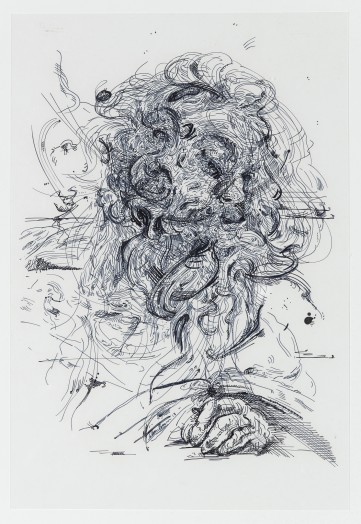 Glenn BrownDrawing 26 (after Strozzi/Strozzi), 2013ink on polypropylene44.1 x 30 cm, framed 67 x 51.5 x 3 cm
Glenn BrownDrawing 26 (after Strozzi/Strozzi), 2013ink on polypropylene44.1 x 30 cm, framed 67 x 51.5 x 3 cm -
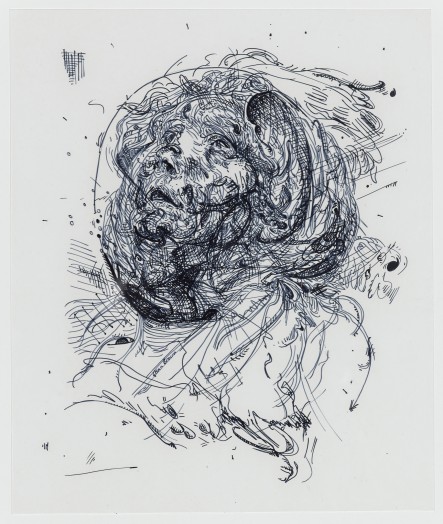 Glenn BrownDrawing 1 (after Greuze), 2014ink on polypropylene29.8 x 24.9 cm, framed 51.5 x 46.5 x 3 cm
Glenn BrownDrawing 1 (after Greuze), 2014ink on polypropylene29.8 x 24.9 cm, framed 51.5 x 46.5 x 3 cm -
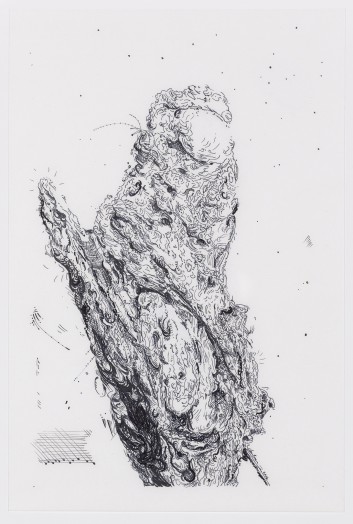 Glenn BrownDrawing 4 (after Oudry), 2014ink on polypropylene45 x 30 cm, framed 67 x 51.5 x 3 cm
Glenn BrownDrawing 4 (after Oudry), 2014ink on polypropylene45 x 30 cm, framed 67 x 51.5 x 3 cm -
 Glenn BrownDrawing 9 (after Greuze/Greuze), 2014ink on polypropylene50 x 38 cm, framed 72 x 59.5 x 3 cm
Glenn BrownDrawing 9 (after Greuze/Greuze), 2014ink on polypropylene50 x 38 cm, framed 72 x 59.5 x 3 cm
-
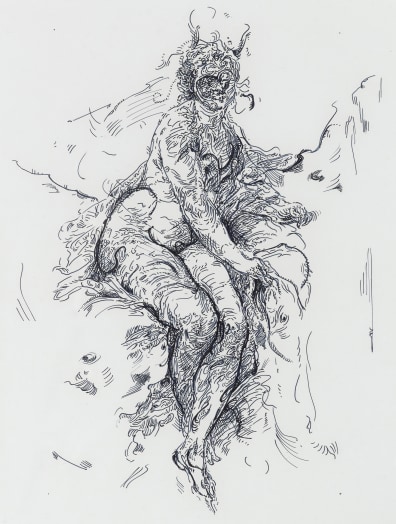 Glenn BrownDrawing 23 (after Boucher), 2014ink on polypropylene35 x 26.9 cm, framed 57 x 48.4 x 3 cm
Glenn BrownDrawing 23 (after Boucher), 2014ink on polypropylene35 x 26.9 cm, framed 57 x 48.4 x 3 cm -
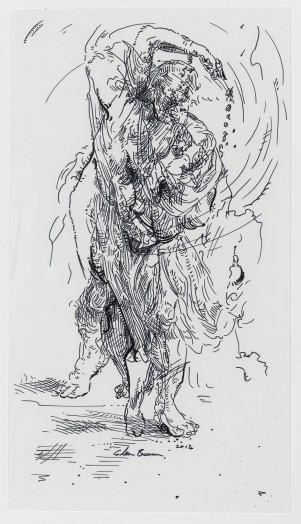 Glenn BrownDrawing 26 (after Van Dyck/?), 2014ink on polypropylene26.9 x 15 cm, framed 51 x 38.4 x 3 cm
Glenn BrownDrawing 26 (after Van Dyck/?), 2014ink on polypropylene26.9 x 15 cm, framed 51 x 38.4 x 3 cm -
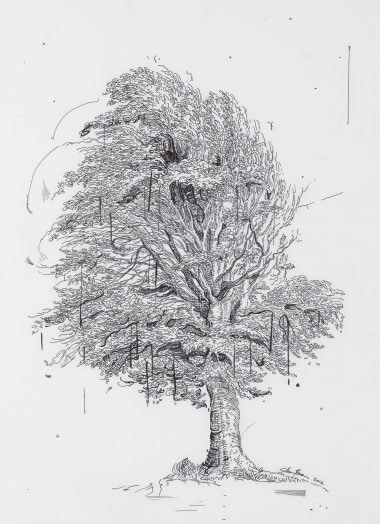 Glenn BrownDrawing 28 (after De Gheyn II), 2014ink on polypropylene45 x 27 cm, framed 72 x 57.4 x 3 cm
Glenn BrownDrawing 28 (after De Gheyn II), 2014ink on polypropylene45 x 27 cm, framed 72 x 57.4 x 3 cm -
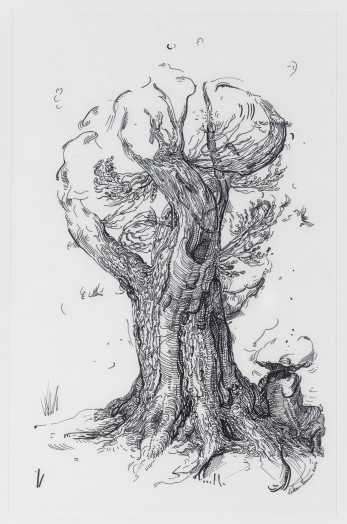 Glenn BrownDrawing 31 (after De Gheyn II), 2014ink on polypropylene37 x 24.1 cm, framed 58.9 x 45.5 x 3 cm
Glenn BrownDrawing 31 (after De Gheyn II), 2014ink on polypropylene37 x 24.1 cm, framed 58.9 x 45.5 x 3 cm
-
 Glenn BrownDrawing 40 (after Greuze/Jordaens), 2014ink on polypropylene over Indian ink on paper50 x 36 cm, framed 71.8 x 57.4 x 3 cm
Glenn BrownDrawing 40 (after Greuze/Jordaens), 2014ink on polypropylene over Indian ink on paper50 x 36 cm, framed 71.8 x 57.4 x 3 cm -
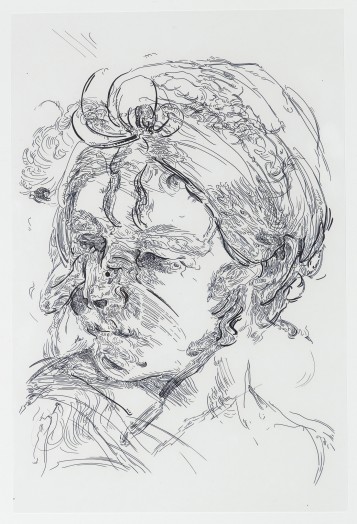 Glenn BrownDrawing 45 (after Reni), 2014ink on polypropylene45 x 30 cm, framed 66.9 x 51.5 x 3 cm
Glenn BrownDrawing 45 (after Reni), 2014ink on polypropylene45 x 30 cm, framed 66.9 x 51.5 x 3 cm -
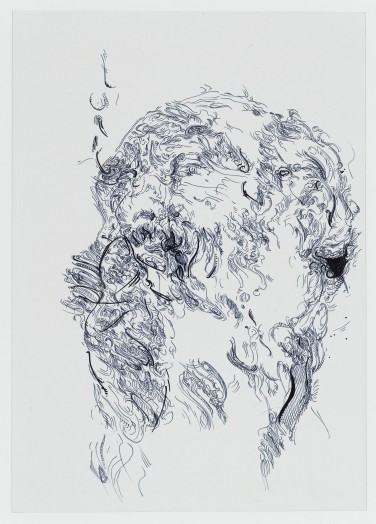 Glenn BrownDrawing 47 (after Tiepolo), 2014ink on polypropylene43 x 30.3 cm, framed 65 x 51.7 x 3 cm
Glenn BrownDrawing 47 (after Tiepolo), 2014ink on polypropylene43 x 30.3 cm, framed 65 x 51.7 x 3 cm -
 Glenn BrownDrawing 50 (after Delacroix), 2014Indian ink on paper, Pergamenata White50 x 35 cm, framed ? x ? x 3 cm
Glenn BrownDrawing 50 (after Delacroix), 2014Indian ink on paper, Pergamenata White50 x 35 cm, framed ? x ? x 3 cm
-
 Glenn BrownDrawing 3 (after Del Sarto), 2015Indian ink and acrylic on paper, Canford Dreadnought Grey84 x 59.3 cm, framed 111 x 86 x 3.5 cm
Glenn BrownDrawing 3 (after Del Sarto), 2015Indian ink and acrylic on paper, Canford Dreadnought Grey84 x 59.3 cm, framed 111 x 86 x 3.5 cm -
 Glenn BrownDrawing 8 (after Murillo/Murillo), 2015Indian ink and watercolour on paper, Pergamenata Natural50 x 34.7 cm, framed 76.5 x 56.2 x 3 cm
Glenn BrownDrawing 8 (after Murillo/Murillo), 2015Indian ink and watercolour on paper, Pergamenata Natural50 x 34.7 cm, framed 76.5 x 56.2 x 3 cm -
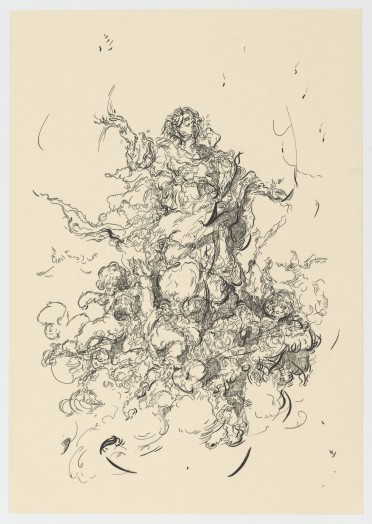 Glenn BrownDrawing 10 (after Murillo/Murillo), 2015Indian ink on paper, Pergamenata Natural50 x 34.8 cm, framed 76.5 x 56.2 x 3 cm
Glenn BrownDrawing 10 (after Murillo/Murillo), 2015Indian ink on paper, Pergamenata Natural50 x 34.8 cm, framed 76.5 x 56.2 x 3 cm -
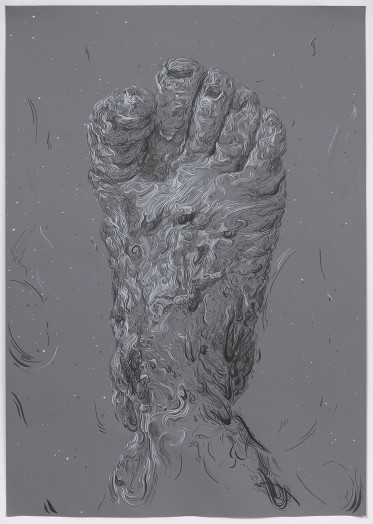 Glenn BrownDrawing 27 (after Menzel), 2015Indian ink and acrylic on paper, Canford Gun Metal84 x 59 cm, framed 90.8 x 66 x 4.4 cm
Glenn BrownDrawing 27 (after Menzel), 2015Indian ink and acrylic on paper, Canford Gun Metal84 x 59 cm, framed 90.8 x 66 x 4.4 cm
-
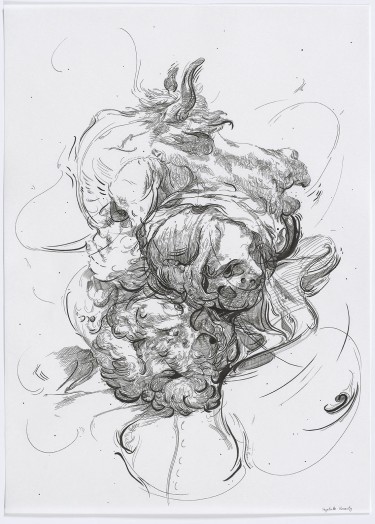 Glenn BrownDrawing 28 (after Pierre/Watelet), 2015Indian ink on paper, Pergamenata White69.5 x 49.6 cm, framed 96.6 x 76.5 x 3.5 cm
Glenn BrownDrawing 28 (after Pierre/Watelet), 2015Indian ink on paper, Pergamenata White69.5 x 49.6 cm, framed 96.6 x 76.5 x 3.5 cm -
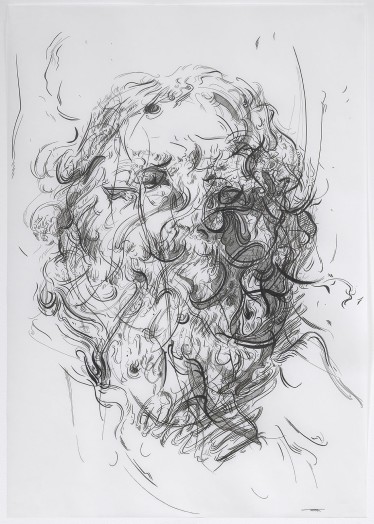 Glenn BrownDrawing 31 (after Van Dyck), 2015Indian ink on paper, Pergamenata White99.8 x 69.8 cm, framed 127 x 95.2 x 3.8 cm
Glenn BrownDrawing 31 (after Van Dyck), 2015Indian ink on paper, Pergamenata White99.8 x 69.8 cm, framed 127 x 95.2 x 3.8 cm -
 Glenn BrownDrawing 39 (after Grünewald), 2015Indian ink on drafting film54.2 x 42.2 cm, framed 75.5 x 63.1 x 3 cm
Glenn BrownDrawing 39 (after Grünewald), 2015Indian ink on drafting film54.2 x 42.2 cm, framed 75.5 x 63.1 x 3 cm -
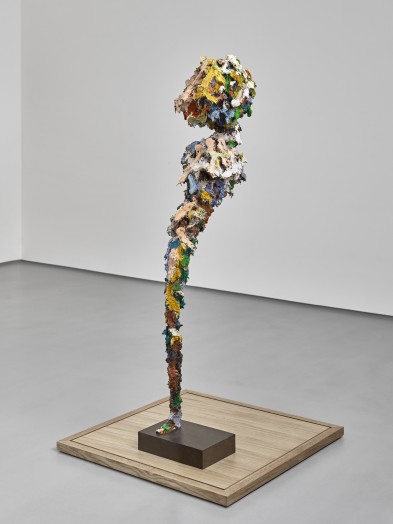 Glenn BrownLazarus, 2015oil paint on fibreglass and metal armature, bronze base159 x 42 x 57 cm (sculpture with bronze base)
Glenn BrownLazarus, 2015oil paint on fibreglass and metal armature, bronze base159 x 42 x 57 cm (sculpture with bronze base)
185.1 x 85.8 x 85.8 (oak and perspex vitrine)
